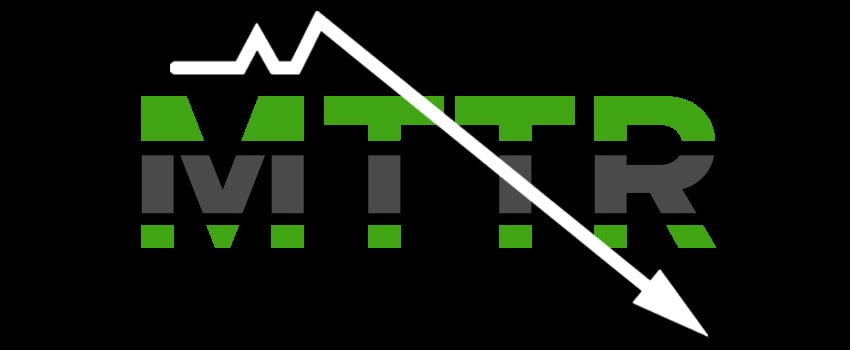
Make 2022 a New Dawn for Your Service Management Capabilities
Sadly, the world still isn’t right – at least in 2019 terms – but at least there’s more breathing room for many organizations (albeit with ongoing economic pressures) and the chance to take stock of what needs to change in 2022. For example, IT service management (ITSM) and wider service management capabilities offer organizations the opportunity to improve and deliver the services and support capabilities that help drive better business operations and outcomes.
In some ways, there’s a new dawn for service management that has patiently been waiting for organizations to wake up to the opportunity it brings. Of course, change has already happened on the back of the business continuity efforts at the start of the global pandemic and then the new ways of working that influenced new ways for IT. But what happens next for your organization? Hopefully, its service management capabilities have at least some opportunity for proactive improvement versus the reactive change that was prevalent in 2020 and carried us through much of 2021.
In this blog @Joe_the_IT_Guy looks at what he thinks needs to be different in the realm of service management in 2022. #ITSM Click To TweetWhat needs to be different in 2022
If you’ve regularly read end-of-year, next-year prediction blogs over the last few years, then you’ll have noticed that much of this has been the same. Perhaps with a different emphasis on the drivers for the required changes ahead.
Last year, I liked that my CEO Sarah Lahav’s “2021 ITSM Predictions – It’s All About Digital Enablement” took a different approach to the year ahead, focusing on the totality of the key ITSM trends and what they meant. Now I’m following suit (in this blog) – cutting through the underlying trends to talk about outcomes. If it helps, you can think of this as focusing on “what we achieve through what we do” rather than simply the “what we do.”
So, while we might all still be looking to run or participate in projects that seek to introduce or further extend our ITSM and service management capabilities related to ITSM trends such as:
- Digital transformation
- Enterprise service management
- Artificial intelligence (AI) – or intelligent automation – adoption
- Transitioning from ITIL v3 to ITIL 4 best practice adoption
- Focusing more on improving employee experience and productivity
I now see 2022 as the right time and opportunity to consolidate all the potentially disparate investments and activities related to the above (and other areas) to finally build what service management does and achieves around business goals and expectations. Of course, all of the above projects will already be doing this – but, importantly, they’ll likely be doing so through their own particular lens.
It’s not a new idea; we’ve all heard a lot of talk in the last few years about the “need to take a holistic approach,” but how holistic are we in reality?
I now see 2022 as the right time & opportunity to consolidate all the potentially disparate investments & activities related to current #ITSM trends - @Joe_the_IT_Guy Click To TweetHolistic or merely “listic”?
OK, so I made that last word up. But I think it represents how we drive much of the change we do in ITSM and service management in a linear or list-based way. Everyone is working in separate swim lanes, where one project will focus on delivering intelligent automation (and perhaps only in IT). Another will focus on measuring and improving the employee experience. And another will focus on extending ITSM capabilities across the organization via the execution of an enterprise service management strategy.
There might be acknowledged overlaps between these separate initiatives, but how few will take a holistic approach to improving business operations and outcomes? Perhaps ensuring that intelligent automation investments are focused on improving the employee experience and productivity, not just for IT but all of the business functions that will be part of the enterprise service management strategy.
So much of the change we do in #ITSM and service management is in a linear or list-based way. This needs to change, says @Joe_the_IT_Guy. Click To TweetPerhaps talking about “a new dawn for service management” perpetuates this issue?
It’s an interesting blog title, but it again compartmentalizes what we do rather than focusing on what we achieve through what we do. Continuing with the above example, that while digital transformation, enterprise service management, AI, ITIL 4 adoption, improving the employee experience and productivity, and perhaps other “IT initiatives” need to be better integrated to deliver the required business change from a service management perspective. There’s also a need to appreciate that the initiatives related to these areas are probably not the only ones associated with improving business operations and outcomes.
Think of this as the corporate “bigger picture” that includes the IT “bigger picture.” That while it’s a new dawn for ITSM and service management, it needs to be more than simply ticking off a list of changes that are being viewed merely through a service-management lens.
Artificial intelligence roll outs, ITIL 4 adoption, employee experience projects... how many of you are operating these things in silos? It's time to get holistic says @Joe_the_IT_Guy. Click To TweetWhat this means for service management practitioners
While it would be so much easier for service management to stay in project-based silos. Hopefully, you (and your colleagues) can see that – while it’s often easier to “go it alone” – the results of the separate project are likely to be suboptimal without the linkages to other improvement initiatives.
Although, some might think that the need to be more “joined-up” is unnecessary. After all, all the improvement initiatives have cascaded down from the same corporate strategy and then the same IT strategy. But can you honestly say that (and these are just examples plucked from the air):
- AI initiatives understand what the organization is trying to achieve in terms of employee experience improvement
- ITIL 4 adoption isn’t just a process-based upgrade
- Employee productivity improvement is driving enterprise service management change rather than it simply being the creation of digital workflows “because IT can”
- Changes consistently improve employee productivity and business outcomes
And these potential issues are from just the IT perspective.
As service management professionals we need to consistently think (and act) beyond our discrete projects to understand better how we improve business operations & outcomes by different teams working together - @Joe_the_IT_Guy #ITSM Click To TweetWhen you look at this through a business-wide lens, there’s even more chance for disconnects. For example, that IT adopts ITIL 4 without fully thinking through the enterprise service management impact. Or AI-enabled capabilities are selected, trained, and applied to one ITSM use case (say automated ticket routing) without recognizing and planning for the broader business use cases (and other business functions might be selecting their different solutions). Or (and I admit that this one is less likely to happen) the IT approach to improving employee experience might differ from the corporate human resources (HR) team’s route.
So, that’s my view of the new dawn for service management in 2022 – that we, as service management professionals, consistently need to think (and act) beyond service management and our discrete projects to understand better how we improve business operations and outcomes by different teams working together. It’s probably not the list of five service management trends for 2022 that you were expecting, but what do you think? Please let me know in the comments.






